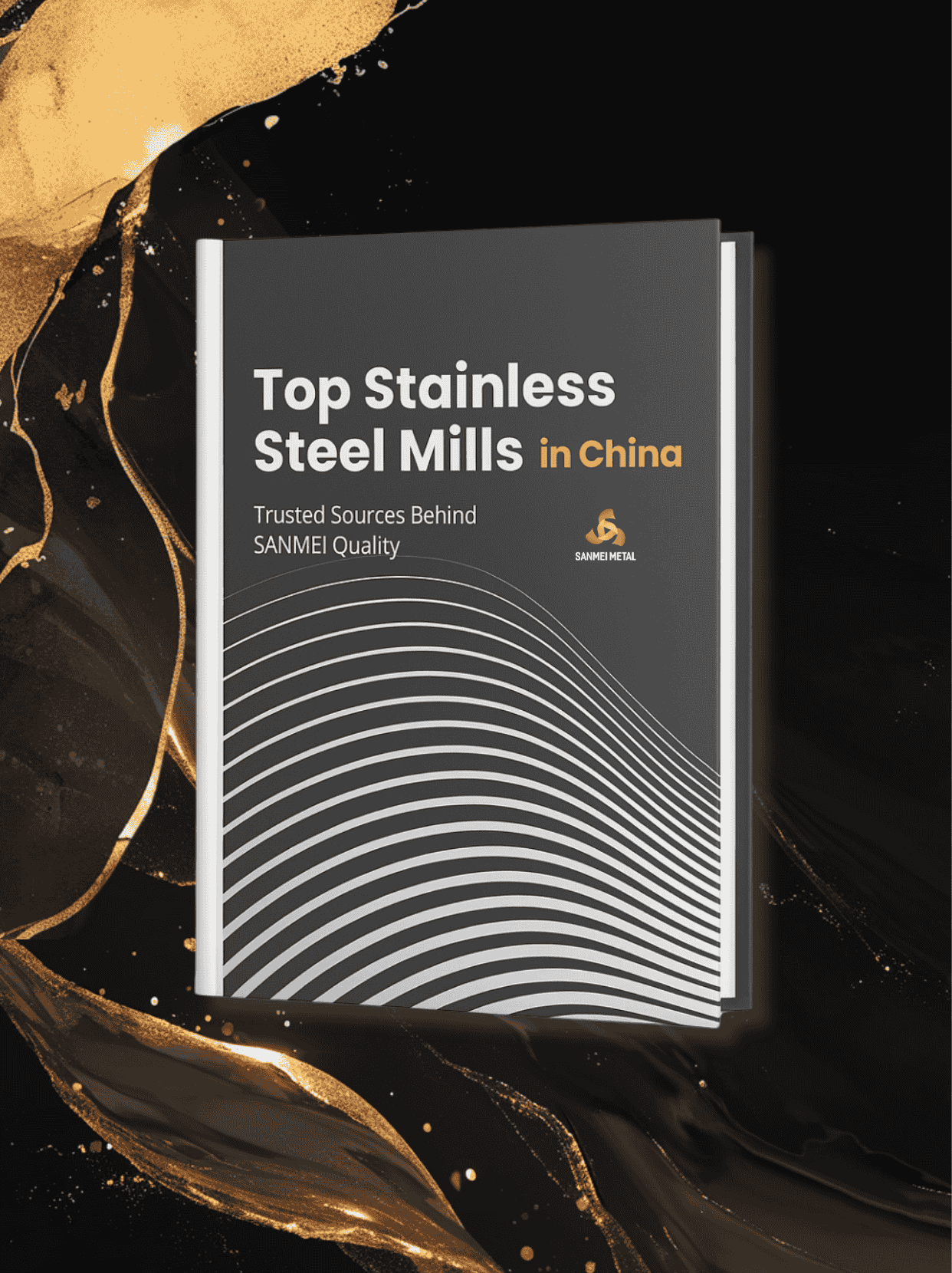스테인리스 스틸 420 가이드: J1, J2 및 그 이상
안녕하세요, 스테인리스 스틸 애호가 여러분! 모든 스테인리스 스틸이 다 똑같은 건 아니라는 사실, 알고 계셨나요? 맞아요! 스테인리스 스틸은 종류가 정말 많은데, 그중 420 시리즈는 모두가 부러워하는 튼튼하고 다재다능한 사촌 같은 존재입니다. 그런데 잠깐, 멋진 형제 제품인 420J1과 420J2가 등장하면 더욱 흥미로워집니다. 마치 아이스크림 선데의 다양한 맛처럼, 각기 다른 매력을 가진 제품들이죠.
각 등급에는 고유한 장점이 있습니다. 제품 페이지에서 개별적으로 살펴보실 수 있습니다.
420 스테인리스 스틸, 420J1 스테인리스 스틸, 그리고 420J2 스테인리스 스틸.
이 블로그에서는 이러한 강철이 존재하는 이유, 차이점, 가장 뛰어난 분야 등에 대해 재미있게 알아보겠습니다.
420, 420J1, 420J2 스테인리스강은 왜 개발되었나요?
스테인리스 스틸로 가득 찬 공구 상자를 가진 엔지니어라고 상상해 보세요. 전동 공구에는 돌처럼 단단한 강철이 필요하고, 고급 자동차 부품에는 쉽게 가공할 수 있는 강철이 필요하며, 수중 장비에는 강철이 필요합니다. 이럴 때 420, 420J1, 420J2가 필요한 것입니다!
이 제품은 스테인리스 스틸로 만든 스위스 군용 칼과 같습니다. 경도, 내식성, 그리고 작업 편의성을 모두 고려하여 최적의 성능을 발휘하도록 설계되었습니다. 탄소 함량을 조절함으로써 이 강철은 마치 장갑처럼 다양한 작업에 맞게 맞춤 제작될 수 있습니다.
420 스테인리스 스틸이란?
스테인리스 스틸계의 머슬카, 420 스테인리스 스틸을 만나보세요! 420 스테인리스 스틸은 고탄소 마르텐사이트계 강철로, 못처럼 단단하여 거의 모든 것을 자를 수 있는 칼처럼 마모와 손상에 강한 소재에 적합합니다. 하지만 머슬카처럼 섬세한 작업이나 녹 방지가 중요한 곳에는 적합하지 않습니다.
420이 다른 인기 등급과 어떻게 비교되는지 궁금하세요?
전체 비교를 확인하세요: 420 스테인리스 스틸 vs 304 스테인리스 스틸 - 어떤 것을 선택해야 할까?
420J1 스테인리스 스틸이란?
이제 스테인리스 스틸의 다재다능한 SUV, 420J1에 대해 이야기해 볼까요? 420의 저탄소 버전으로, 더욱 유연하고 작업하기 쉬운 소재입니다. 마치 일상적인 통근에도 문제없으면서도 결혼식에서도 멋스러운 스타일을 연출할 수 있는 스틸을 사용하는 것과 같습니다. 유연성과 내구성이 모두 필요한 장식용 제품이나 수술 도구에 적합합니다.
420J2 스테인리스 스틸이란?
그리고 균형 잡힌 스테인리스 스틸인 420J2가 있습니다! 탄소 함량 기준으로 420과 420J1 사이에 위치하며, 경도와 내식성이 조화를 이룹니다. 날카로움과 내후성 사이의 적절한 균형이 필요한 주방에서 항상 믿고 사용하는 가위나 칼에 적합한 스틸입니다.
구별되는 성능 특성: 420, 420J1 및 420J2 스테인리스강
스테인리스 스틸 420/420J1/420J2 시트 및 플레이트 동등 등급
이러한 강종에 관해서는 마치 세계 여행을 하는 것과 같습니다. 어떤 곳에서는 420이라고 불리는 강종이 다른 곳에서는 다른 이름을 가진 강종일 수도 있습니다. 모두 마르텐사이트계 스테인리스강 계열에 속하지만, 지역에 따라 동등한 표준은 약간씩 다를 수 있습니다.
화학 성분과 성능에 미치는 영향
이 스테인리스 스틸의 화학적 성질은 요리법과 같습니다. 재료 하나만 바꾸면 요리 전체가 달라집니다!
420: 탄소 함량이 높고(0.15~0.40%) 크롬 함량이 높아(12.0~14.0%) 매우 단단합니다.
420J1: 탄소 함량이 낮고(0.06–0.15%) 크롬 함량이 동일하므로 내식성과 가공성이 더 뛰어납니다.
420J2: 중간 범위의 탄소 함량(0.15~0.36%)은 경도와 내식성의 적절한 균형을 제공합니다.
자세한 재료 데이터나 샘플 가용성에 대한 정보가 필요하신가요? 420 시리즈 데이터시트 및 샘플 지원은 SANMEI에 문의하세요 →
기계적 및 물리적 특성: 조성 차이의 영향
이러한 속성은 강철의 이력서와 같아서 강철이 무엇을 할 수 있는지 보여줍니다.
420: 가장 강하고 단단하지만, 동시에 가장 부서지기 쉽습니다.
420J1: 더 부드럽고 부식에 강해서 조금 더 유연합니다.
420J2: 다양한 용도에 적합한 적당한 강도와 경도를 제공하여 균형을 이룹니다.
420, 420J1 및 420J2 스테인리스 강의 적용
이 강철이 빛나는 부분은 마치 스스로 모험을 선택하는 책과 같습니다.
420: 수술 도구나 산업용 칼날 등 마모가 심한 도구와 기구를 다루는 데 적합합니다.
420J1: 이 제품은 장식용 부품이나 가정용품처럼 성형성과 내식성이 중요한 용도에 적합합니다.
420J2: 내구성과 내식성이 필요한 절삭 공구, 칼날, 가위 등에 사용됩니다.
중국에서 제품을 공급받는 경우, 다음 가이드를 통해 해당 등급의 제품이 어디에서 제조되는지, 검증된 공급업체를 찾는 방법을 알아보세요.
중국 최고의 스테인리스 스틸 제조업체
이 모든 강철이 칼에 적합한가?
칼에 관해서는 세 가지 등급 모두 뛰어나지만, 420은 높은 경도와 날카로움 유지력 면에서 뛰어난 성능을 보입니다.
420J1은 경도가 낮아 고급 칼날에 적합한 소재는 아니지만, 내식성이 중요한 실용 칼에 적합한 믿음직한 조수가 될 수 있습니다.
420J2는 중간 가격대의 칼과 가위에 사용되는 팀 플레이어로, 내구성과 날카롭게 하기 쉬움의 균형이 잘 맞습니다.
칼날이나 도구에 사용할 420 스테인리스 스틸에 대한 전문가의 조언이 필요하신가요?
SANMEI의 기술팀은 귀하의 다음 프로젝트에 적합한 경도, 마감, 밀링 소스를 선택하는 데 도움을 드립니다.
지금 SANMEI에 문의하세요 →결론: 귀하의 응용 분야에 적합한 420 스테인리스 스틸 선택
자, 이제 알겠습니다! 강철 전문가든 강철에 관심이 많든, 420, 420J1, 420J2 스테인리스 강의 차이점을 이해하면 작업에 맞는 강철을 선택하는 데 도움이 될 수 있습니다. 중요한 것은 자신의 특정 요구에 맞는 적절한 균형을 찾는 것입니다. 즐거운 강철 선택 되세요!
스테인리스 스틸 420 시트나 코일이 필요하시면 저희에게 문의해 주세요.
우리는 귀하에게 가장 포괄적인 지식, 가장 사려 깊은 서비스, 가장 높은 품질의 제품을 제공할 수 있습니다.
420J2 스테인리스 스틸을 구매할 준비가 되셨나요?
정밀 연마된 장식용 시트나 산업용 코일 소재가 필요하든, 산메이 직접적인 밀 연결, 빠른 대응, 완전한 추적성을 제공합니다.
지금 SANMEI에 문의하세요 →







